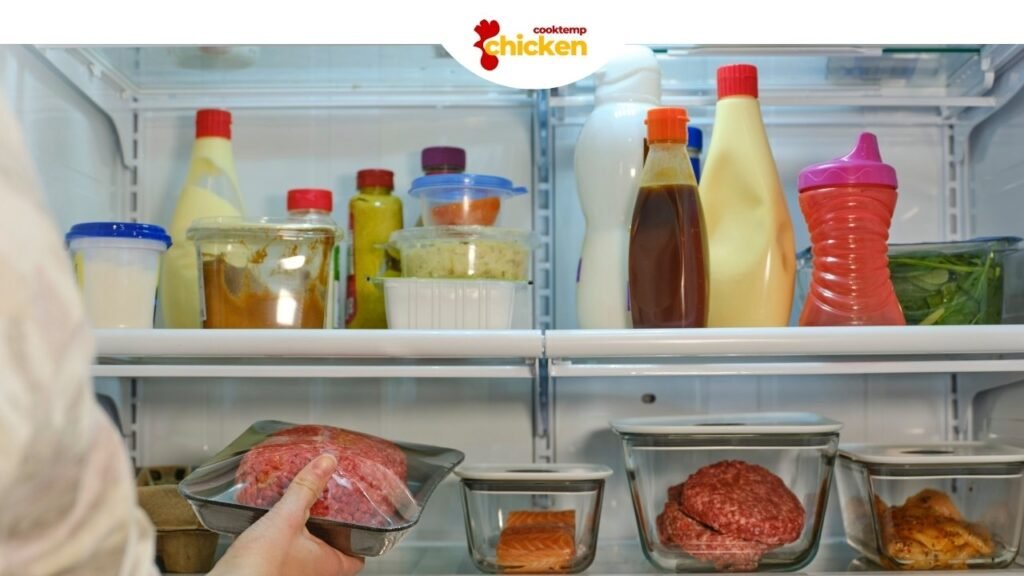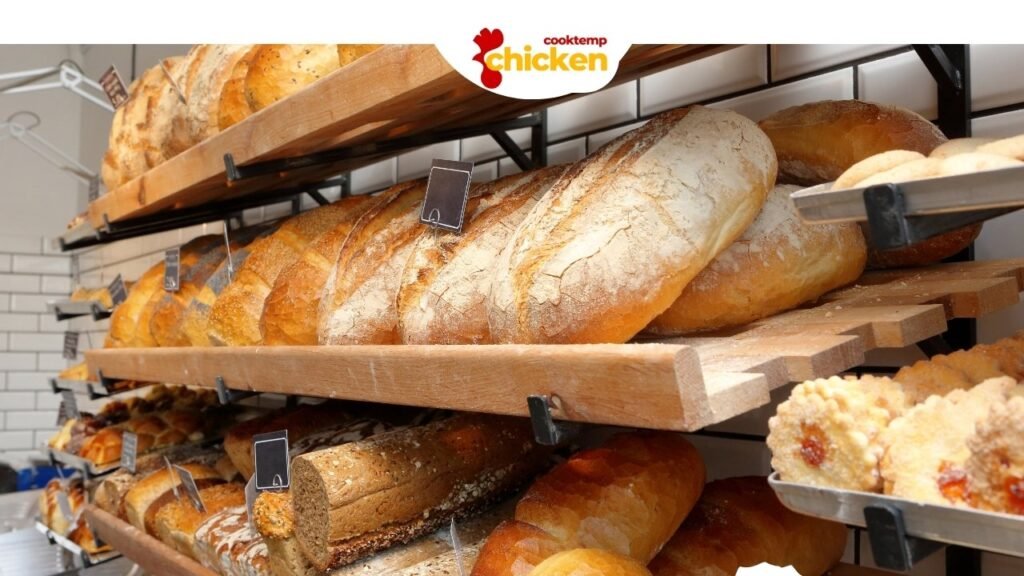Imagine walking into your kitchen, only to discover that the chicken you bought last week has turned into a science experiment. Yikes! Properly storing potentially hazardous food isn’t just a good habit—it’s essential for keeping you and your loved ones safe from foodborne illnesses. But where to store potentially hazardous food can sometimes feel like solving a puzzle. Fear not! This guide will break down everything you need to know to keep your kitchen safe and your food fresh.
Understanding Potentially Hazardous Foods
What Makes a Food Potentially Hazardous?
Potentially hazardous foods (PHFs) are items that require careful handling and storage to prevent the growth of harmful bacteria. These foods typically have a high moisture content, neutral or slightly acidic pH, and are rich in nutrients—perfect conditions for bacteria to thrive. Think dairy products, meat, seafood, cooked grains, and cut fruits and vegetables.
Common Categories of PHFs
- Meats and Poultry: Fresh, cooked, or processed.
- Seafood: Fish, shellfish, and other marine products.
- Dairy Products: Milk, cheese, yogurt.
- Eggs and Egg Products: Raw or cooked.
- Cooked Grains and Beans: Rice, pasta, lentils.
- Cut Fruits and Vegetables: Pre-cut for convenience.
- Ready-to-Eat Foods: Deli meats, sandwiches, salads.
Key Principles of Safe Storage
Temperature Control
Temperature is a critical factor in preventing bacterial growth. The danger zone for food is between 40°F (4°C) and 140°F (60°C). Keeping foods either below or above this range is essential for safety.
Avoiding Cross-Contamination
Storing different types of food together can lead to cross-contamination. For instance, raw meat juices can drip onto vegetables, transferring harmful bacteria.
Proper Packaging
Using airtight containers or proper wrapping methods can extend the shelf life of your food and prevent contamination from other items in your storage areas.
Where to Store Potentially Hazardous Food

Now, let’s dive into the nitty-gritty of where to store potentially hazardous food to ensure maximum safety and freshness.
Refrigerator Storage
The refrigerator is your best friend when it comes to storing PHFs. Here’s how to optimize its use:
- Optimal Temperatures: Keep your fridge at or below 40°F (4°C). Use a thermometer to monitor temperatures accurately.
Shelving Tips:
- Top Shelves: Ideal for ready-to-eat foods like leftovers, drinks, and herbs.
- Middle Shelves: Store dairy products such as milk and cheese.
- Bottom Shelves: Perfect for raw meats and fish to prevent their juices from dripping onto other foods.
- Crisper Drawers: Use one for fruits and another for vegetables to maintain appropriate humidity levels.
- Storage Examples:
- Leftovers: Store in airtight containers on the top shelves.
- Raw Chicken: Place in a leak-proof container on the bottom shelf.
Refrigerator Temperature Zones and Examples
| Zone | Temperature Range | Suitable Foods |
|---|---|---|
| Top Shelves | ≤ 40°F (4°C) | Leftovers, drinks, ready-to-eat foods |
| Middle Shelves | ≤ 40°F (4°C) | Dairy products (milk, cheese) |
| Bottom Shelves | ≤ 40°F (4°C) | Raw meats, poultry, seafood |
| Crisper Drawers | Varies | Fruits (low humidity) / Vegetables (high humidity) |
Freezer Storage

Freezing is a fantastic way to extend the life of PHFs, but it’s crucial to do it right.
- Freezing Temperatures: Set your freezer to 0°F (-18°C) or lower to keep foods safe indefinitely, though quality may decline over time.
Best Practices
- Packaging: Use freezer-safe bags or containers to prevent freezer burn.
- Labeling: Always label with the date of freezing to keep track of storage times.
- Organization: Store similar items together and avoid overpacking to maintain consistent temperatures.
Pantry and Dry Storage
Not all PHFs need refrigeration. Some can be safely stored in a cool, dry pantry.
Suitable Foods:
- Canned Goods: Ensure cans are intact and stored away from direct sunlight.
- Dry Grains and Beans: Keep in airtight containers to prevent pests.
- Nut Butters and Jams: Store in a cool, dark place to maintain freshness.
- Tips to Prevent Spoilage:
- Check Expiry Dates: Rotate stock to use older items first.
- Use Airtight Containers: Protect against moisture and pests.
- Maintain Cleanliness: Regularly clean pantry shelves to avoid contamination.
Safe Storage for Prepared Foods
Leftovers and meal preps require special attention to stay safe and tasty.
Leftovers:
- Cool Quickly: Transfer to shallow containers and refrigerate within two hours.
- Use Within Safe Timeframes: Most leftovers are safe for 3-4 days in the fridge or up to 3 months in the freezer.
Meal Prep Containers:
- Choose Airtight Options: Prevent spills and contamination.
- Portion Control: Helps in managing serving sizes and reduces waste.
Shelf Life Considerations:
- Refrigerated Meals: Generally safe for 3-4 days.
- Frozen Meals: Best consumed within 3 months for optimal quality.
Additional Tips for Safe Food Storage
Labeling and Dating
Never underestimate the power of a label. Marking your containers with the date of storage helps you keep track of freshness and ensures you use foods within safe periods.
FIFO Method (First In, First Out)
Adopt the FIFO method to rotate your stock. Always place newer items behind older ones to minimize the risk of using expired products.
Regularly Checking for Spoilage
Make it a habit to inspect your stored foods regularly. Look for signs of spoilage such as unusual odors, discoloration, or mold. If in doubt, throw it out!
Proper Cleaning of Storage Areas
Keep your refrigerators, freezers, and pantry clean. Regular cleaning prevents the buildup of bacteria and mold, ensuring a safe storage environment.
Frequently Asked Questions (FAQs)
How long can I store raw chicken in the refrigerator?
Raw chicken can be safely stored in the refrigerator for 1-2 days. If you don’t plan to use it within this timeframe, freezing is a better option.
What’s the best way to thaw frozen meat?
The safest way to thaw frozen meat is in the refrigerator. This allows the meat to thaw gradually and stay within a safe temperature range. Alternatively, you can use the cold water method or microwave, but never leave meat out at room temperature.
Can I store eggs in the pantry?
It’s best to store eggs in the refrigerator. Keeping them cold slows bacterial growth and maintains their freshness longer.
How can I prevent cross-contamination in my kitchen?
To prevent cross-contamination:
- Use separate cutting boards for raw meat and vegetables.
- Store raw meats on the bottom shelves of the refrigerator.
- Wash hands, utensils, and surfaces thoroughly after handling raw foods.
What should I do if I suspect food has gone bad?
If you suspect that a food item has gone bad, it’s safest to discard it. Look for signs like off smells, unusual textures, or visible mold.
Conclusion
Knowing where to store potentially hazardous food is crucial for maintaining food safety and preventing illnesses. By understanding the principles of temperature control, avoiding cross-contamination, and following proper storage practices, you can ensure that your food remains fresh and safe to eat. Remember to label and date your foods, use the FIFO method, and regularly check for spoilage. With these tips in your kitchen arsenal, you can cook with confidence and peace of mind. So, next time you store that fresh chicken or those vibrant veggies, you’ll know exactly how to keep them safe and delicious!


